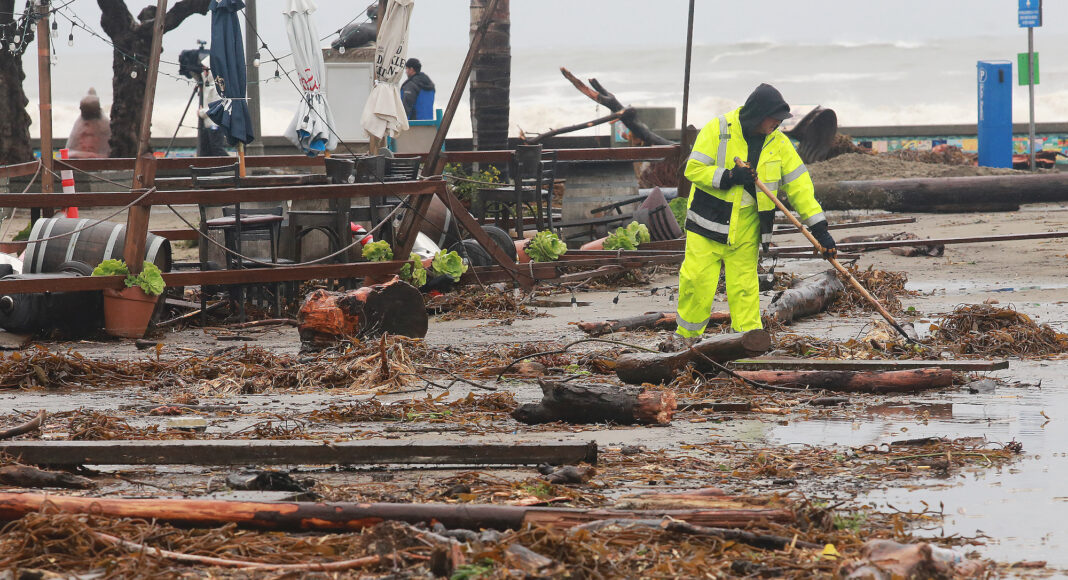When Watsonville resident Amy Thomas reached out to the Federal Emergency Management Agency (FEMA) for help, she had already paid thousands of dollars to repair damages caused by a spate of recent atmospheric river storms.
The colossal storm that hit Santa Cruz County on Jan. 1 resulted in the flooding of Thomas’ home and dozens of other homeowners along Corralitos Creek with contaminated water. Thomas’ house has been flooded twice, ruining her belongings and forcing her and her family to temporarily move to a rental residence.
After the first flood filled her home on New Year’s Eve, Thomas paid $6,900 for a disaster cleanup company to shovel the muddy water and dry the flooring. Then, her house flooded a second and a third time the following days.
“Our whole house is damaged,” she says. “We have to replace everything, so I’m not sure what the cost is going to be.”
Thomas’ homeowners insurance will cover only repairs to her house, but not her personal property and other expenses, leaving her on the hook for a rental, among other things.
So, Thomas started looking into relief programs like FEMA, who says their disaster assistance program can help with temporary housing, emergency home repairs and uninsured and underinsured personal property losses. The federal program can also go toward medical and dental expenses.
But according to Thomas, the application process isn’t simple. She spent two days of frustrating and fruitless efforts trying to apply through FEMA’s website. She finally called the agency and—thanks to having all the necessary personal information needed on hand—was able to put in an application.
With FEMA grants averaging $5,000, Thomas hopes she will receive enough money to remove the mud from her home and the surrounding areas.
Amy Bach, whose company United Policyholders advocates for insurance holders, says Thomas’ frustrating experience isn’t an anomaly. Insurance adjusters are trained to deny coverage for flooding when property owners file claims through their own insurance.
Instead, Bach advises that people filing claims read and understand their policy before calling their insurance companies and choose their words carefully when making a claim.
“If you say there was damage to the structure that allowed water to come in, that could be covered,” she says.
If denied, Bach says property owners can get a second opinion by contacting a public adjuster, who typically charges as much as 10% of the eventual payout or a private attorney, who may charge around 30%. The bottom line is that insurance companies are private companies that do not have property owners’ interests as their focal point.
“The reality is that this is a financial situation where you’re dealing with a for-profit insurance company,” Bach says. “They’re trying to hold on to the money, and you need the money.”
SUFFERING BUSINESSES
Days after the storms ripped through the Central Coast and a tidal swell sent waves into the beachfront restaurants in Capitola Village, My Thai Beach owner Dominick King returned to find six inches of water still standing in his business.
While the foundation is still sound, he lost his inventory, the floors and back windows were destroyed and the entryway and back wall was severely damaged.
“All of our plumbing has been washed away into the sea somewhere, I assume,” he says.
Because he rents the space, King says he is turning to his landlord’s insurance company to help rebuild.
He is also considering applying for one of the SBA loans but says the move is on hold until he can get an estimate from a contractor.
“We’re still trying to figure everything out,” he says. “There are still a lot of unanswered questions with insurance.”
Even though Capitola City officials say it will take more than a year to repair the wharf, King emphasizes that the rest of the village—the majority of which is undamaged—is still open for business and hoping locals and tourists bring their business back.
“They’re all open,” says Carrie Arnone, Capitola Soquel Chamber of Commerce CEO. “They are fully functioning and they are ready to serve, so it’s a matter of people coming to support them. It looks as beautiful as it always has, even if it’s a bit different.”













